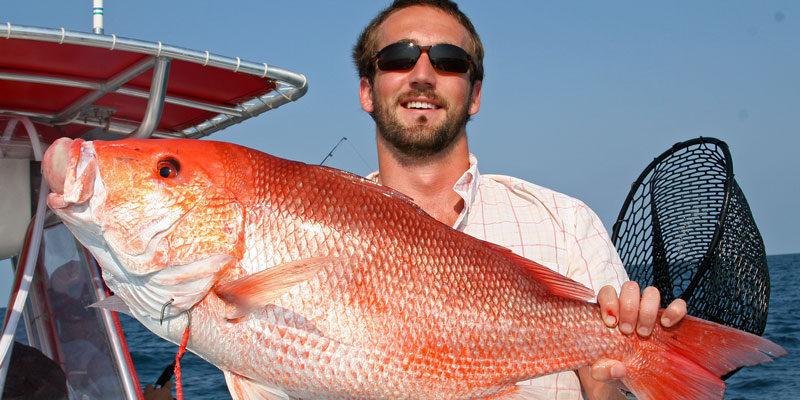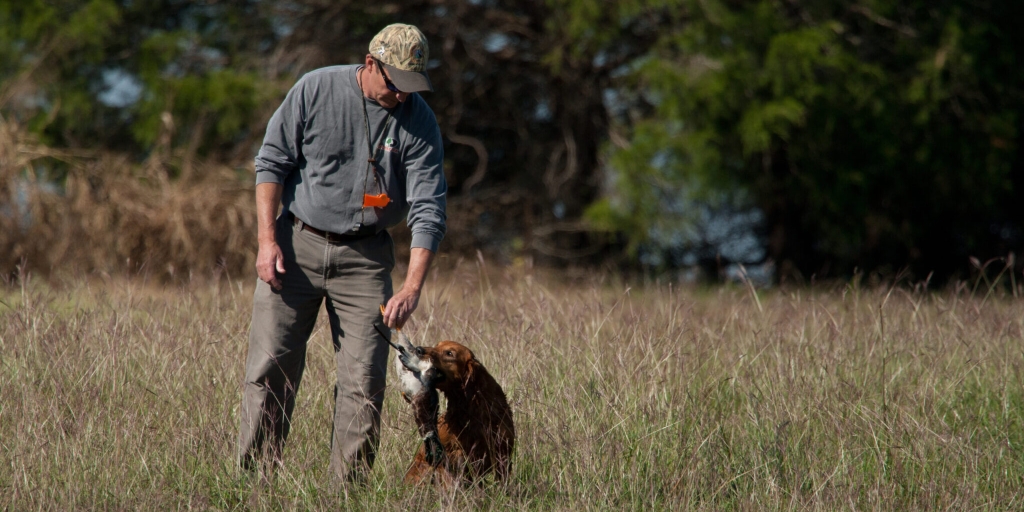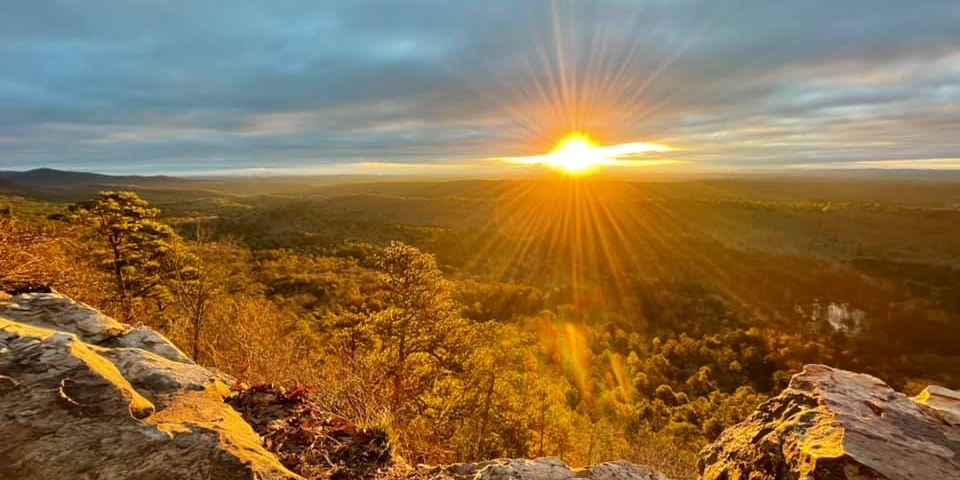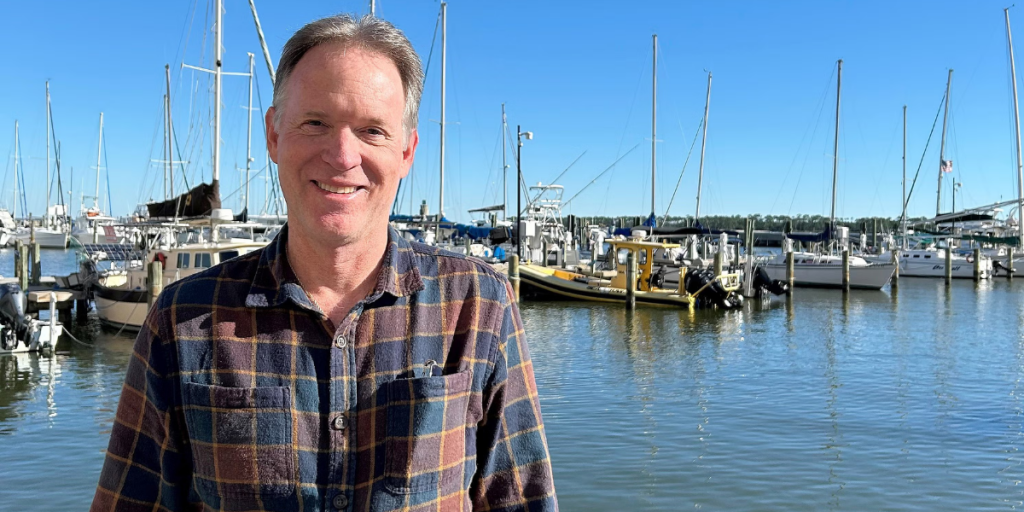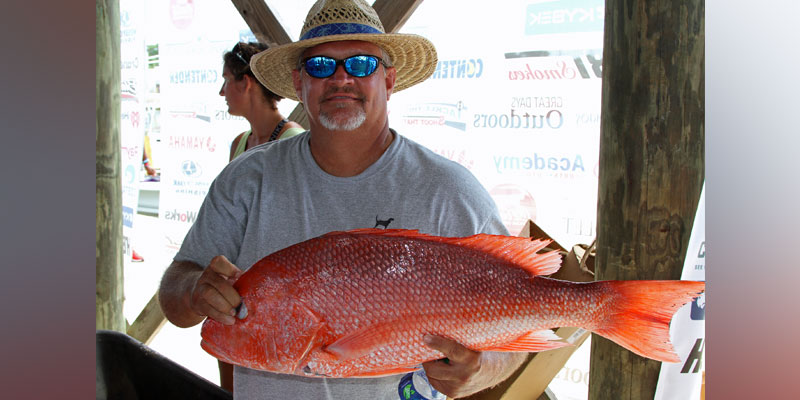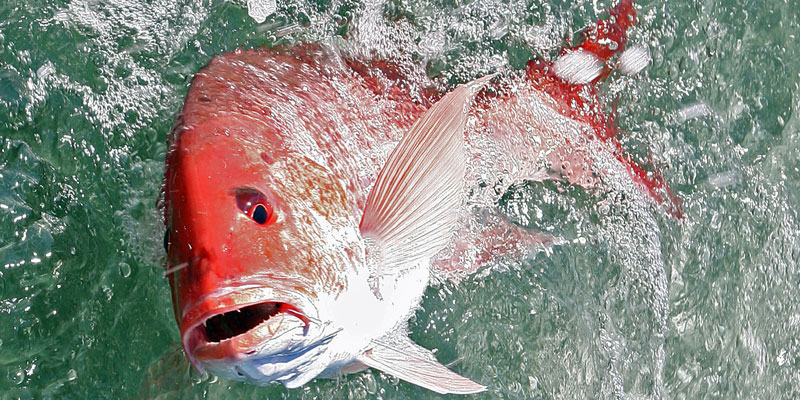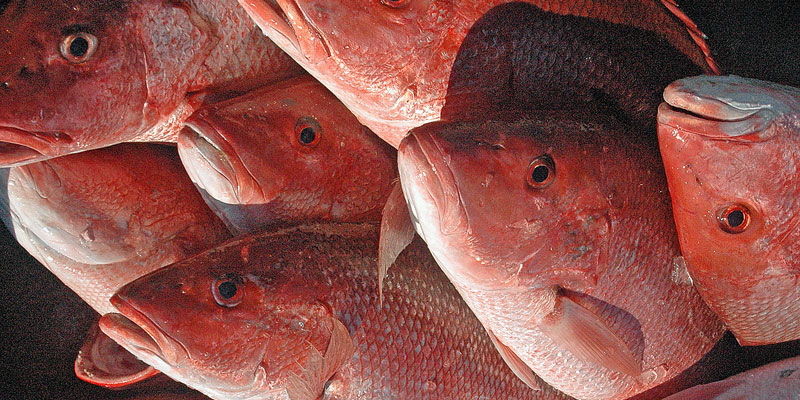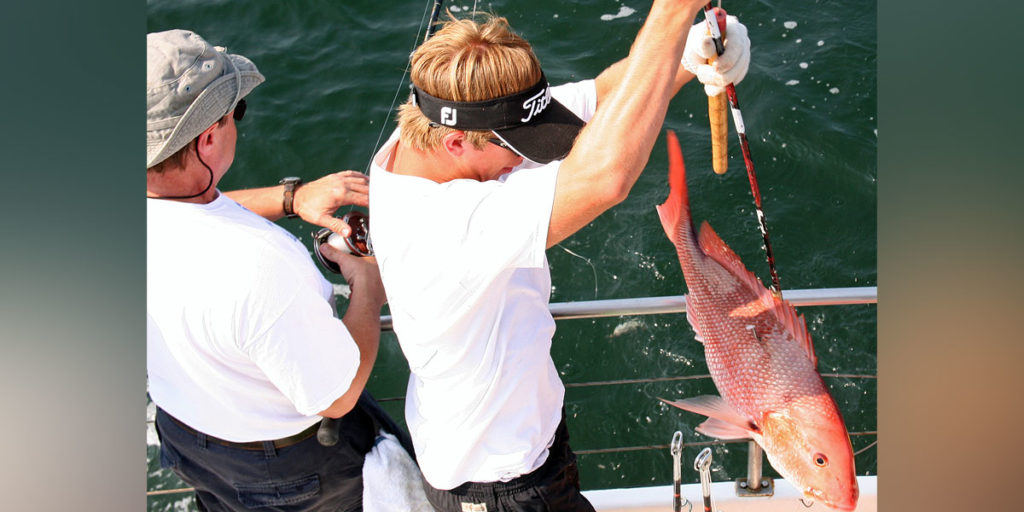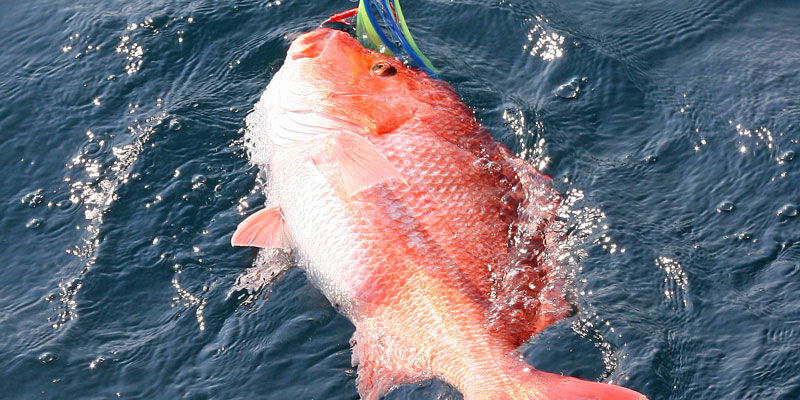NOAA Fisheries announced over the weekend a 79-day red snapper season for for-hire vessels with federal reef fish permits in federal waters of the Gulf of Mexico.
The season for federally permitted for-hire vessels (charter boats) will open seven days a week at 12:01 a.m. on June 1, 2022, and will close at 12:01 a.m. on August 19, 2022.
The 2022 season for private recreational anglers opens the Friday before Memorial Day (May 27) and runs each extended weekend from Friday through Monday until Alabama’s annual quota is projected to be met.
NOAA Fisheries said the total Gulf of Mexico red snapper recreational quota is 7,399,000 pounds whole weight. The private angler sector is allocated 57.7%, and the for-hire sector is allocated 42.3% of the quota.
Although the 2022 quota for the Gulf of Mexico federal for-hire component is 3,130,000 pounds, the annual catch target is 2,848,000 pounds whole weight, which is 91% of the quota and provides a buffer to keep the sector from harvesting more than the quota. The quota for red snapper in the Gulf for both the commercial and recreational sectors is 15.1 million pounds.
Meanwhile, the Gulf of Mexico Fishery Management Council (Gulf Council), meeting recently in Orange Beach, had some discouraging news about one of the Gulf species that anglers target when red snapper season is closed – greater amberjack.
Kevin Anson, the Alabama Department of Conservation and Natural Resources (ADCNR) Marine Resources Division (MRD) representative on the Gulf Council, said recent amberjack assessments have raised concerns about the hard-fighting species that tends to congregate around structure in deeper water.
“The amberjack assessments going back the last 20 years have been indicating the stock is undergoing overfishing and/or is in an overfished status,” Anson said. “We have implemented several management measures for the last 5 to 7 years to try to improve the stock. They have not provided any benefits that we can see at this time. We reduced the number of season days. We increased the size limit. We reduced the bag limit (one fish per angler), and we just haven’t seen any improvement in the stock.
“We’re going to have to make some tougher decisions at the Council to get it where it’s not overfished or undergoing overfishing. In the short term, we’re going to be looking at management that will try to get us to a point where we don’t exceed the annual catch limit. That potentially is going to a mean there will be a much shorter season length.”
Anson, MRD’s Chief Biologist, said increasing the size limit for amberjack, which is already 34 inches fork length, would likely be counterproductive. Bag limits could end up being reduced using the number of fish per vessel or number of anglers.
“There was some discussion at the time we increased the size limit that it could cause some additional mortality,” he said. “Bigger fish don’t handle very well when you’re fighting them, particularly in the summertime. Reducing the bag limit, although it’s an option, is not a very good option at this point. At the angler level or vessel level, you’re talking about fractional bag limits, and those are not very palatable to most folks.”
Anson said the Gulf Council will be working within a time limit to address the overfishing status of greater amberjack. Once the Gulf Council is notified of the overfishing status by NOAA’s Southeast Regional Administrator, the Gulf Council has two years to implement management measures to resolve the overfishing issue.
“There are no guarantees the management decisions we make will restore the stock or help us harvest below the annual catch limit, but we have to take some action different than our current management actions,” Anson said.
Although anglers who fish off the coast of Alabama are less affected, gag grouper is also overfished, which will impact our Florida neighbors.
“It’s in a similar situation (to amberjack),” Anson said. “We have to address the overfishing designation. There may be some season closures that we can do that will be more impactful. A reduction in the season is the easiest thing to do. We’re looking to Florida for some direction on how to handle this. The majority of recreational and commercial catches of gag grouper come from Florida.”
On the horizon, Anson said the Gulf Council will again be dealing with the reduced number of cobia, especially along the northern Gulf Coast. He said discussions outside the Gulf Council process indicate some anglers are talking about completely shutting the cobia season down to try to get the stock to rebound.
“I’ve heard more conversations about just closing it down. It’s so bad, the fishing forums and discussion said there shouldn’t be any hesitation to shut it down. But that has not been discussed at the Council. We have increased the size limit and reduced the bag limit, and it hasn’t done much. We’ve had discussions about going to seasons or discussing a fractional bag limit, like for amberjack,” Anson said.
When I moved to the Alabama Gulf Coast 30 years ago to cover the outdoors, the annual spring cobia migration was a big deal. Now cobia tournaments have shut down, and anglers rarely even see any fish cruising the coast, much less getting one to bite.
“It was pretty much gangbusters in the spring back in the day, depending on weather and water clarity,” Anson said. “That has disappeared. It’s a memory for those who experienced the fishery when it was better.”
Returning to red snapper, the method of determining harvest is still unsettled. NOAA Fisheries has recently implemented a fishing effort survey sent by mail. The newer survey estimates two to four times more fishing trips than the previous effort survey method, which utilized landline telephones as a means for contacting coastal recreational saltwater anglers. Currently, data from historical Coastal Household Telephone Survey (CHTS) and Alabama’s Snapper Check are used to estimate snapper harvest.
Anson said the Snapper Check program estimated Alabama’s private recreational anglers landed 939,143 pounds during the 2021 red snapper season, which was below the 1.12-million-pound quota. Since 2018, annual Snapper Check estimates have been very close to or just above the annual quota, which has ranged from 986,000 to 1.12 million pounds. Several people who spoke during the Gulf Council’s public testimony period said they were concerned that snapper were harder to catch this year than in recent years and were concerned that catches were leading to local depletion.
“Some people are worried about red snapper and use the term of ‘localized depletion,’” Anson said. “Our contention is we’ve been penalized in the assessment, and we were never harvesting at the level we could. That’s why we ended up with such big fish and so many fish that it was easy for folks to catch a limit.
“When people are talking about the fish that are missing, they’re talking about the fish that are closest to shore. A large proportion of private recreational anglers do not travel too far from shore, and charter boat owners have been selling two or three trips a day during most of their season for several years. You can’t get out very far on four- or six-hour trips. Within the first few weeks of the season, most nearshore places, those within 20 miles from shore, get picked over and have smaller fish. That’s just how it is, but a large portion of the fish off Alabama are beyond that distance.”
As a reminder, anglers landing red snapper in Alabama with private boats are required by law to complete one landing report per vessel trip of their harvested red snapper through Snapper Check before the fish are removed from the boat or the boat with the fish is removed from the water. Reporting of greater amberjack and gray triggerfish also is mandatory. Owners/operators of federally permitted charter vessels no longer need to report the harvest of these three species in Snapper Check due to the implementation of a federal electronic reporting system this year. Also, all recreational anglers and charter vessels, state and federally permitted, in possession of Gulf reef fish are required to have an Alabama Gulf Reef Fish Endorsement.
The best and easiest way to comply with the reporting requirement is through the Snapper Check feature found on the Outdoor AL app. The app is available from Apple and Android stores. Reports can also be submitted online at www.outdooralabama.com. Paper reports and drop boxes are no longer available. Visit www.outdooralabama.com/saltwater-fishing/saltwater-reef-fish-endorsement for information about the Reef Fish Endorsement.
Also, don’t forget the DESCEND Act goes into effect this year. The act requires all vessels that are fishing for reef fish in federal waters to have a venting tool or descending tool on board and ready to use when fishing. The venting tool is used to release gases from the fish’s swim bladder to allow it to return to the reef naturally. The descending device is used by attaching the fish to the device and lowering the fish and device into the water to a certain depth before releasing it. The goal of the Act is to reduce the effects of barotrauma to the fish, which will the increase the survival rate of discarded fish and improve the sustainability of the resource.
David Rainer is an award-winning writer who has covered Alabama’s great outdoors for 25 years. The former outdoors editor at the Mobile Press-Register, he writes for Outdoor Alabama, the website of the Alabama Department of Conservation and Natural Resources.




